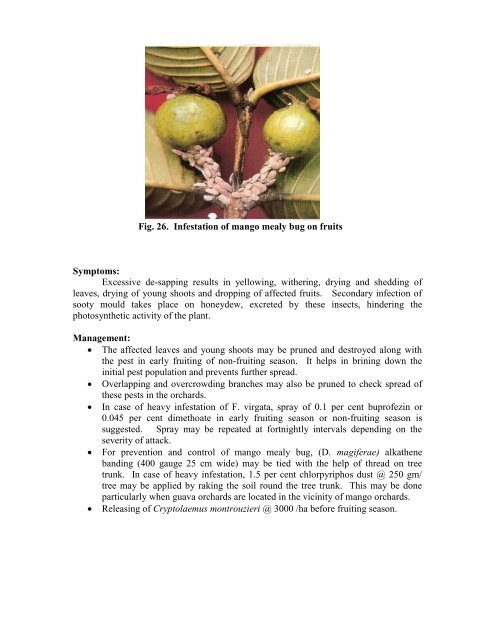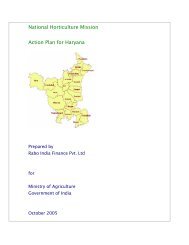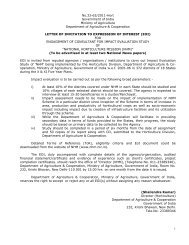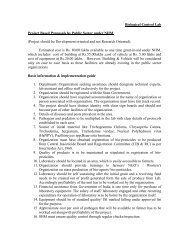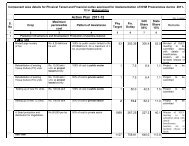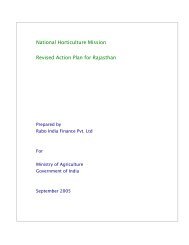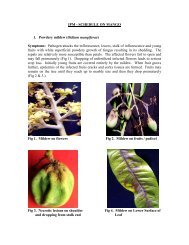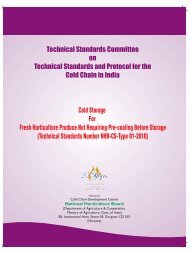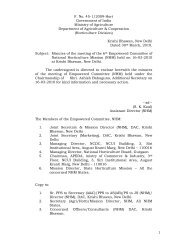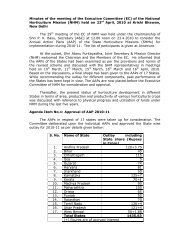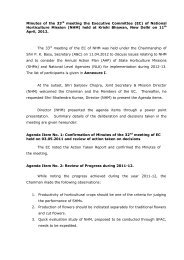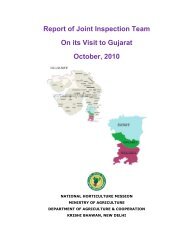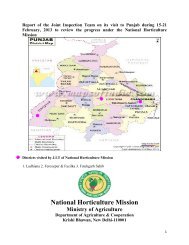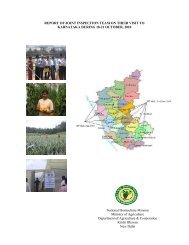Guava - National Horticulture Mission
Guava - National Horticulture Mission
Guava - National Horticulture Mission
You also want an ePaper? Increase the reach of your titles
YUMPU automatically turns print PDFs into web optimized ePapers that Google loves.
Fig. 26. Infestation of mango mealy bug on fruitsSymptoms:Excessive de-sapping results in yellowing, withering, drying and shedding ofleaves, drying of young shoots and dropping of affected fruits. Secondary infection ofsooty mould takes place on honeydew, excreted by these insects, hindering thephotosynthetic activity of the plant.Management: The affected leaves and young shoots may be pruned and destroyed along withthe pest in early fruiting of non-fruiting season. It helps in brining down theinitial pest population and prevents further spread. Overlapping and overcrowding branches may also be pruned to check spread ofthese pests in the orchards. In case of heavy infestation of F. virgata, spray of 0.1 per cent buprofezin or0.045 per cent dimethoate in early fruiting season or non-fruiting season issuggested. Spray may be repeated at fortnightly intervals depending on theseverity of attack. For prevention and control of mango mealy bug, (D. magiferae) alkathenebanding (400 gauge 25 cm wide) may be tied with the help of thread on treetrunk. In case of heavy infestation, 1.5 per cent chlorpyriphos dust @ 250 gm/tree may be applied by raking the soil round the tree trunk. This may be doneparticularly when guava orchards are located in the vicinity of mango orchards. Releasing of Cryptolaemus montrouzieri @ 3000 /ha before fruiting season.


